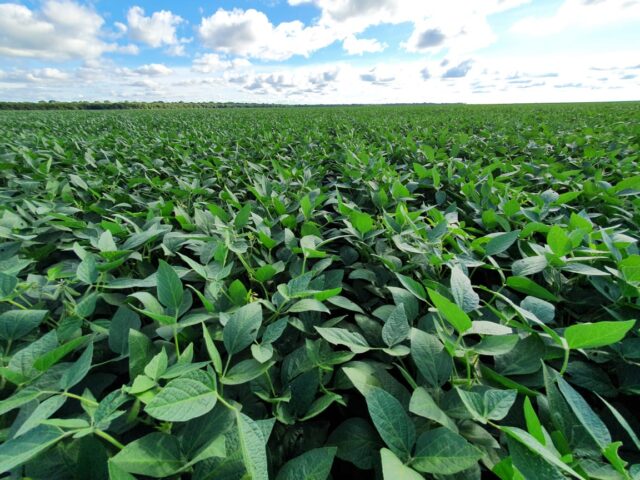The president of the city’s Rural Union, Marcelo Lupatini, says that producers with varieties with a longer cycle, of more than 115 days, are having to intensify the use of pesticides against bedbugs and caterpillars. The uninterrupted rains delay these applications by up to nine days, which means that the ideal point for using the product is lost and the pests spread, causing more damage.
Compromised soybean productivity
In the district of Boa Esperança, in Sorriso, there are also sprayers with delayed schedules due to high humidity and cloudy weather. Producer Bruno Cesar Zanatta planted 1,840 hectares of soybeans this harvest and is having difficulty controlling the presence of bedbugs, which could compromise crop performance.
“I have already applied four applications for bedbugs. We can see that they are present in the fields. The rain comes and sometimes the products are not applied for 20 minutes and do not have the desired effect, so we have to apply them again”, he says. According to him, last year, the loss was 18%, 8% of which was due to burnt grain and another 10% due to bedbugs.” Agricultural technician Ederson Cleiton Peruzzolo recalls that weather forecasts had already been showing that the scenario would be one of heavy rain and cloudy weather. “The application that we planned to do every 15 days ended up being delayed by three to seven days, depending on the application. Applying the product a little later already compromises its efficiency, making crop care more difficult”, he explains. The specialist also says that the pests that have been standing out in the crop are target spot and anthracnose, which are being observed intensely in the pods. However, the biggest concern continues to be bedbugs. Severe attack Peruzzolo has been in the region for ten years. He is responsible for an area of approximately 30 thousand hectares and says that the attack by stink bugs is silent and severe for both soybeans and corn.
“[Last year] we had a lot of problems when delivering the product to the warehouse. In the classification, we had a discount for stink bug bites, loads that weighed a thousand, two thousand kilos less because of these stink bug bites. This pest has intensified a lot. Today, the producer makes three, four applications for control. In the past, we made one or two, at most”, he recalls.
According to the research, the most common species of the pest in Mato Grosso are the green-bellied stink bug and the brown stink bug. For control to be more efficient, the recommendation is to adopt good insecticide management in the areas of earlier soybeans to avoid the “green bridge” to late cultivars and corn. According to Lucia Vivan, a researcher at the MT Foundation, the recommendation is to apply pesticides when, on average, one to one and a half bugs are identified.
“The beating cloth is important because we will consider the nymph population, which will be present in the area and feed as much as the adults. Generally, in the first applications it is important to use a more shock-resistant product and, after the occurrence of nymphs, to use products based on neonicotinoids and pyrethroids. With this controlled population, we will have an increase in the colonization period, with a longer period of time for the soybeans to be free from the presence of these insects”, she recommends.
Source: Canal Rural

